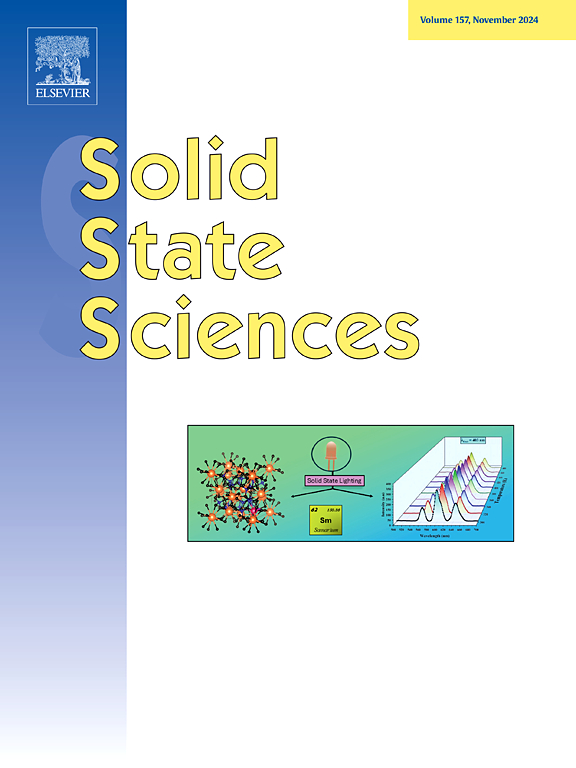A new transition metal borate, Co6(B24O39(OH)6(H2O)6·2.21H2O, synthesized via a mild hydrothermal synthesis
IF 3.4
3区 化学
Q2 CHEMISTRY, INORGANIC & NUCLEAR
引用次数: 0
Abstract
A new transition metal borate hydrate, Co6B24O39(OH)6(H2O)6·2.21H2O, was synthesized via a mild hydrothermal method using boric acid as the melt. The compound crystallizes in the trigonal space group P with lattice parameters a = b = 13.17840(10) Å, c = 12.3287(2) Å, and a unit cell volume of 1854.27(4) Å3 (Z = 2). This borate hydrate crystallizes in a new structure type comprised of layers containing [BO3] trigonal planar units and [BO4] tetrahedra that are linked by CoO6 and Co(OH)2(H2O)4 octahedra via corner-sharing. The crystalline phase was confirmed by powder X-ray diffraction, while single-crystal X-ray diffraction was used to determine the structure. The structure contains eight crystallographically independent boron atoms that connect to each other and form a Fundamental Building Block (FBB) consisting of two triborate rings [B3O7OH] and two [BO3] trigonal planar units connected via corner-sharing. This FBB can be written as 8: 2[2(3:Δ + 2T) + 2(1:Δ)]. Optical and magnetic measurements, as well as thermal analyss, were carried out to characterize the new borate.

求助全文
约1分钟内获得全文
求助全文
来源期刊

Solid State Sciences
化学-无机化学与核化学
CiteScore
6.60
自引率
2.90%
发文量
214
审稿时长
27 days
期刊介绍:
Solid State Sciences is the journal for researchers from the broad solid state chemistry and physics community. It publishes key articles on all aspects of solid state synthesis, structure-property relationships, theory and functionalities, in relation with experiments.
Key topics for stand-alone papers and special issues:
-Novel ways of synthesis, inorganic functional materials, including porous and glassy materials, hybrid organic-inorganic compounds and nanomaterials
-Physical properties, emphasizing but not limited to the electrical, magnetical and optical features
-Materials related to information technology and energy and environmental sciences.
The journal publishes feature articles from experts in the field upon invitation.
Solid State Sciences - your gateway to energy-related materials.
 求助内容:
求助内容: 应助结果提醒方式:
应助结果提醒方式:


